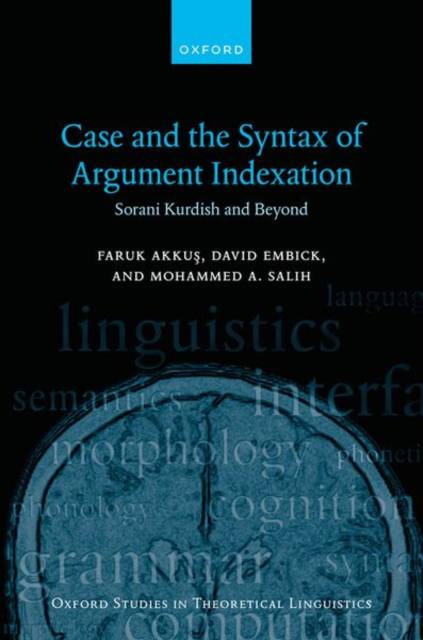
- Afhalen na 1 uur in een winkel met voorraad
- Gratis thuislevering in België vanaf € 30
- Ruim aanbod met 7 miljoen producten
- Afhalen na 1 uur in een winkel met voorraad
- Gratis thuislevering in België vanaf € 30
- Ruim aanbod met 7 miljoen producten
Zoeken
Case and the Syntax of Argument Indexation
Sorani Kurdish and Beyond
Faruk Akkuş, David Embick, Mohammed A Salih
€ 209,45
+ 418 punten
Omschrijving
This book presents an analysis of argument indexation, the process by which arguments in a clause are coindexed with grammatical markers that bear their features. The main case study is based on varieties of Sorani Kurdish (in the Iranian language family), whose indexation properties interact with an alignment split of the type often called 'split Ergative.' From this, the authors develop a more general theory that can be applied to many other languages. A key line of argument is that agreement and clitic movement operations target specific cases, in a process called 'Case Targeting'. The approach further hypothesizes that case labels like 'Nominative', 'Ergative', and so on are shorthand for decomposed feature bundles. It is these features that are targeted by syntactic operations (agreement and movement). In addition to requiring Case Targeting, the analysis of Sorani implies that syntactic operations (agreement, clitic movement) and their morphophonological reflexes may be mismatched: agreement and movement can both produce affixes and clitics, contrary to many views of morphosyntax/morphophonology relations. The book offers a detailed exploration of the implications of this approach, particularly for theories of case assignment.
Specificaties
Betrokkenen
- Auteur(s):
- Uitgeverij:
Inhoud
- Aantal bladzijden:
- 352
- Taal:
- Engels
- Reeks:
Eigenschappen
- Productcode (EAN):
- 9780198962281
- Verschijningsdatum:
- 30/10/2025
- Uitvoering:
- Hardcover
- Formaat:
- Genaaid
- Afmetingen:
- 160 mm x 224 mm
- Gewicht:
- 680 g

Alleen bij Standaard Boekhandel
+ 418 punten op je klantenkaart van Standaard Boekhandel
Beoordelingen
We publiceren alleen reviews die voldoen aan de voorwaarden voor reviews. Bekijk onze voorwaarden voor reviews.








